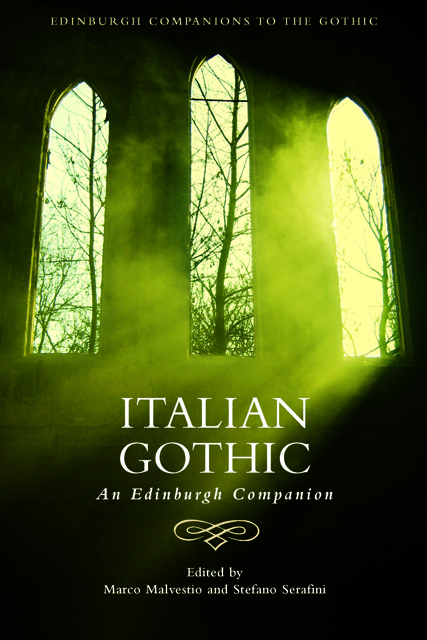Introduction. ‘A systemic disorder, an extravagant research, and an abjuration of common sense’: Defining the Italian Gothic
Published online by Cambridge University Press: 20 October 2023
Summary
First principles, Clarice: simplicity. Read Marcus Aurelius, ‘Of each particular thing, ask: What is it in itself? What is its nature?’
— The Silence of the LambsOver the past forty years, at least since the appearance of David Punter's ground-breaking The Literature of Terror (1980), the field of Gothic Studies has grown in a variety of different directions. Explorations of its transnational dimension (Camilletti, Trans-National Gothic; Elbert and Marshall), trans-medial aspects (Och and Strayer; Botting and Spooner; Punter, The Edinburgh Companion to Gothic and the Arts) and interactions with other literary forms (Ascari) and fields of knowledge (Hogle and Miles) have contributed to complicating and problematising traditional understandings of the Gothic. Critical studies have also started going beyond the Anglo-American paradigm, bringing to light manifestations of the Gothic in other cultural contexts, such as France (Gibson; Hale, ‘French and German’ and ‘Translation in Distress’; Hall; Horner; Horner and Zlosnik; Wright), Spain (Aldana and Rødtjer; Curbet; Davies; Lee Six; López Santos; Roas) and Latin America (Casanova-Vizcaíno and Inés Ordíz). Thus, it is surprising that, with the exception of a 2007 volume edited by Francesca Billiani and Gigliola Sulis and a small number of articles and book chapters, scholarly research on the Italian Gothic seems non-existent. For instance, the monographic issue of the journal Gothic Studies dedicated to ‘Italy and the Gothic’ is, in reality, exclusively concerned with Italy in the Gothic, which is to say Italy as a setting for Gothic novels written in other languages. In its application to Italian cultural artefacts, the term gotico is almost never used in bookshops, which tend to privilege labels such as ‘fantastic’ or ‘horror’, and it is just as rare in mainstream journals, newspapers and academic criticism.
Without doubt, the very idea of an Italian Gothic will sound like an oxymoron to most readers. This is in many ways paradoxical given the widespread presence of the Gothic in Italian art, literature, film, television series, graphic novels and music. In both high and popular culture, the Gothic intrudes upon and pervades an extraordinary variety of cultural products, from the short stories that appeared in forgotten magazines of the fin de siècle to literary classics such as Alessandro Manzoni's I promessi sposi (1827) or Antonio Fogazzaro's Malombra (1881).
- Type
- Chapter
- Information
- Italian GothicAn Edinburgh Companion, pp. 1 - 16Publisher: Edinburgh University PressPrint publication year: 2023



